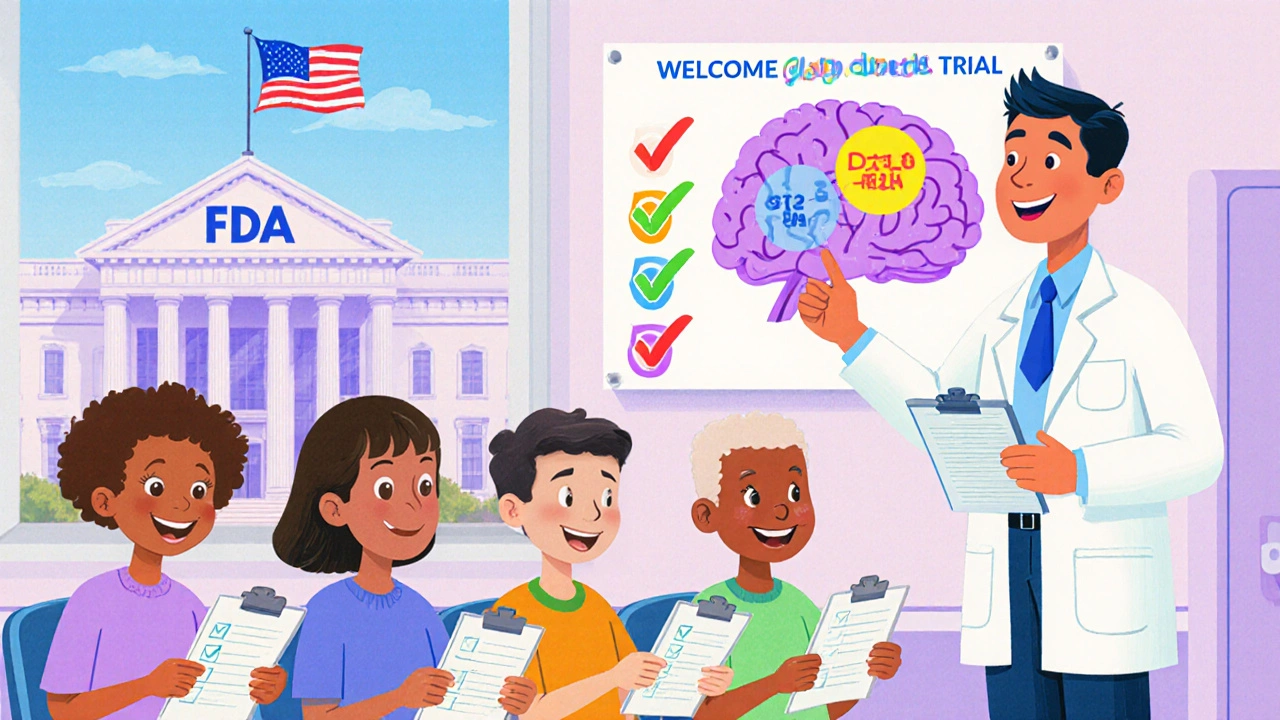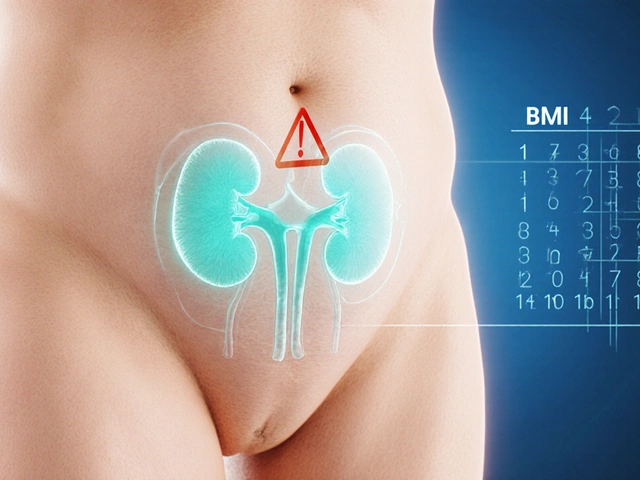Risperidone Dosing Calculator
Risperidone Dosing Calculator
Select your patient's indication, age group, and CYP2D6 status to determine appropriate dosing range.
Recommended Dosing
Dosing Range
Starting Dose: Always begin at the lowest recommended dose and titrate slowly.
Key Considerations: Monitor for prolactin elevation, especially in women of childbearing age.
Side Effect Considerations
Important: This calculator provides general guidance. Always consult prescribing information and individualize treatment based on patient response.
Did you know the drug that’s now a staple for treating schizophrenia was once a laboratory curiosity that almost never made it to market? Risperidone is an atypical antipsychotic discovered by Janssen Pharmaceutica in the late 1980s. Its journey from a modest research project to a global prescription powerhouse is packed with scientific breakthroughs, regulatory hurdles, and shifting clinical preferences.
Key Takeaways
- Risperidone was discovered by Janssen Pharmaceutica in 1988 and received FDA approval in 1993.
- It works by blocking dopamine D2 receptors and serotonin 5‑HT2A receptors, giving it a unique side‑effect profile.
- Compared with first‑generation antipsychotics like haloperidol, risperidone causes fewer motor side effects but higher prolactin elevation.
- Patents expired in 2010, opening the market to generics and the metabolite Paliperidone.
- Today it treats schizophrenia, bipolar disorder, and irritability in autism, with long‑acting injectable forms expanding its use.
1. The Early Years: From Janssen’s Lab to the First Compound
In 1988, Janssen Pharmaceutica synthesized a series of benzisoxazole derivatives. Among them, the molecule later named risperidone showed promising antipsychotic activity in rodent models, outperforming older drugs on the behavior‑suppression test.
Initial pharmacology work revealed a dual‑action profile: strong affinity for dopamine D2 receptors and moderate antagonism at serotonin 5‑HT2A receptors. This combo hinted at a lower risk of extrapyramidal symptoms, the hallmark side effect of first‑generation agents like haloperidol.
2. Clinical Trials and the Road to FDA Approval
PhaseI trials in 1990 established tolerability in healthy volunteers. By 1991, the company launched a multinational PhaseII/III program involving over 1,200 patients with diagnosed schizophrenia. The pivotal study, published in 1993, showed a 25% greater reduction in the Positive and Negative Syndrome Scale (PANSS) score compared with the then‑standard haloperidol, with a statistically significant drop in motor side effects.
The American Food and Drug Administration (FDA) granted approval in August1993, branding risperidone as the first marketed atypical antipsychotic. European regulators followed suit in 1994, and the drug quickly became a cornerstone of modern psychopharmacology.
3. How Risperidone Works: The Receptor Story
Risperidone’s clinical profile stems from its receptor binding pattern:
- Dopamine D2 antagonism - reduces positive psychotic symptoms.
- Serotonin 5‑HT2A antagonism - modulates mood and lessens motor side effects.
- Moderate affinity for α‑adrenergic and histamine H1 receptors - contributes to sedation and orthostatic hypotension at higher doses.
The drug is metabolized primarily by CYP2D6 into the active metabolite 9‑hydroxyrisperidone, known as Paliperidone. This metabolite retains the same receptor profile, which later paved the way for a separate long‑acting formulation.

4. Market Evolution: Competition and the Rise of Atypicals
Risperidone’s success spurred a wave of new atypical agents. Olanzapine (1996), quetiapine (1997), and clozapine (re‑approved for treatment‑resistant schizophrenia) entered the scene, each offering nuanced trade‑offs in efficacy, weight gain, and metabolic risk.
Below is a snapshot of how risperidone compares with three other major antipsychotics:
| Drug | Approval Year | Primary Indication | Key Receptor Targets | Common Side Effects |
|---|---|---|---|---|
| Risperidone | 1993 | Schizophrenia, Bipolar Disorder | D2, 5‑HT2A | Prolactin ↑, Weight gain modest |
| Olanzapine | 1996 | Schizophrenia, Bipolar Disorder | D2, 5‑HT2A, H1, α1 | Weight gain significant, Metabolic syndrome |
| Clozapine | 1989 (US re‑approval 1990) | Treatment‑resistant Schizophrenia | D2, 5‑HT2A, Muscarinic | Agranulocytosis, Seizures |
| Haloperidol | 1967 | Schizophrenia, Acute psychosis | D2 (high affinity) | Extrapyramidal symptoms, Tardive dyskinesia |
Risperidone sits in the middle: lower motor side effects than haloperidol, less severe weight gain than olanzapine, and a safer hematologic profile than clozapine.
5. Patents, Generics, and the Rise of Paliperidone
The original patent for risperidone (US6,302,799) expired in 2010 in the United States and shortly after in Europe. This opened the floodgates for generic manufacturers, driving the price down by up to 85% in many markets.
Because the active metabolite Paliperidone is pharmacologically identical, the same chemical entity could be marketed under a new brand name with a longer half‑life. In 2006, the FDA approved the extended‑release tablet Invega®, and in 2009, the long‑acting injectable Invega Sustenna® entered the market, offering once‑monthly dosing for patients with adherence challenges.
6. Modern Clinical Use: Indications, Dosing, and Safety
Today, risperidone is prescribed for three primary conditions:
- Schizophrenia - typical adult dose 2‑6mg/day.
- Bipolar I disorder (manic or mixed episodes) - 2‑6mg/day as adjunct or monotherapy.
- Irritability associated with autism spectrum disorder - 0.5‑1mg/day for children aged 5years and older.
Key safety considerations include:
- Hyperprolactinemia: can cause galactorrhea, menstrual irregularities, or gynecomastia.
- Metabolic changes: modest weight gain and occasional dyslipidemia.
- Cardiac effects: QT‑interval prolongation is rare but monitored in high‑risk patients.
- Drug‑drug interactions: strong CYP2D6 inhibitors (e.g., fluoxetine) raise plasma levels, requiring dose reduction.

7. Special Populations: Children, Elderly, and Pregnancy
In pediatric patients, the FDA approved risperidone for autism‑related irritability at lower starting doses (0.25mg/day) with careful titration. Elderly patients, especially those with dementia‑related psychosis, have a higher risk of cerebrovascular events; guidelines now recommend using the lowest effective dose and limiting duration.
During pregnancy, animal studies show no teratogenic effect, but human data remain limited. Most clinicians favor continuation if the mother is already stable, weighing psychiatric benefit against potential neonatal extrapyramidal symptoms.
8. Future Directions: Long‑Acting Injectables and Pharmacogenomics
The development of long‑acting injectable (LAI) risperidone in 2008 (Risperdal Consta®) transformed adherence strategies, especially in community mental health settings. Ongoing research explores sub‑cut LAI formulations that could be administered every 2‑3months, further reducing clinic visits.
Pharmacogenomic testing for CYP2D6 polymorphisms is gaining traction. Poor metabolizers may experience higher drug exposure and thus more prolactin‑related side effects, prompting dose adjustments or a switch to a drug less dependent on CYP2D6 metabolism.
Quick Recap for Clinicians
- Risperidone’s dual D2/5‑HT2A antagonism gives it a balanced efficacy‑side‑effect profile.
- Since generic entry, it’s a cost‑effective first‑line option for schizophrenia and bipolar mania.
- Monitor prolactin levels, especially in women of child‑bearing age.
- Consider LAI formulations for patients with adherence challenges.
- Stay alert to CYP2D6 status; adjust dose when needed.
Frequently Asked Questions
Why is risperidone called an "atypical" antipsychotic?
Atypical antipsychotics, including risperidone, block both dopamine D2 and serotonin 5‑HT2A receptors. This dual action reduces positive psychotic symptoms while causing fewer motor side effects than first‑generation drugs that target only D2.
What is the main difference between risperidone and its metabolite paliperidone?
Paliperidone (9‑hydroxyrisperidone) is the active metabolite of risperidone. Chemically, it adds a hydroxyl group, giving it a longer half‑life and allowing once‑daily extended‑release or monthly injectable formulations. Clinically, they have nearly identical efficacy and side‑effect profiles.
Can risperidone cause weight gain?
Weight gain with risperidone is generally modest compared with agents like olanzapine. Most patients experience 1‑3kg increase over six months, but individual responses vary based on baseline metabolism and diet.
Is risperidone safe for children with autism?
The FDA approved risperidone for irritability in autism for children aged 5years and older. Starting at 0.25mg/day and titrating slowly is the recommended approach, with regular monitoring for sedation and metabolic changes.
How does CYP2D6 affect risperidone dosing?
Risperidone is metabolized mainly by CYP2D6. Poor metabolizers can have up to double the plasma concentration, increasing the risk of prolactin elevation and sedation. Dose reductions of 25‑50% are often advised for known poor metabolizers.






Mark Eddinger
October 16, 2025 AT 14:41The historical overview of risperidone provided here is both accurate and concise. It correctly highlights the 1993 FDA approval and the drug’s receptor profile. The distinction between motor side effects and prolactin elevation is particularly well‑described. Overall, this summary serves as an excellent reference for clinicians and students alike.
Patrick Renneker
October 23, 2025 AT 09:32While the article admirably chronicles the ascent of risperidone, one cannot overlook the broader sociopolitical forces that subtly directed its market dominance; the pharmaceutical lobbying that surged in the early 1990s, the reimbursement policies of Medicare and Medicaid that favored atypicals, and the media narratives that painted newer agents as inherently superior, all converged to create an environment ripe for rapid adoption. Moreover, the emphasis on dopamine‑serotonin antagonism appears, in hindsight, to have been as much a marketing construct as a scientific breakthrough; many early trials were underpowered, and the proclaimed reduction in extrapyramidal symptoms was modest when scrutinized against contemporary meta‑analyses. The article further glosses over the economic ramifications of patent expiry in 2010, a watershed moment that precipitated a steep decline in brand‑name pricing, thereby democratizing access but also inviting aggressive generic competition that eroded profit margins for the original innovator. It would be remiss not to mention that the long‑acting injectables, heralded as a revolution in adherence, introduced logistical challenges for outpatient services, requiring cold‑chain storage and specialized administration protocols that strained mental health infrastructures. In addition, the pharmacogenomic considerations surrounding CYP2D6 polymorphisms, though briefly noted, deserve deeper exploration; poor metabolizers encounter significantly higher plasma concentrations, which can exacerbate prolactin‑related adverse events, a nuance that is critical for personalized dosing strategies. The narrative, while comprehensive, could benefit from a more critical appraisal of the post‑approval safety surveillance data, particularly regarding metabolic side effects that have emerged in real‑world cohorts. Finally, the comparative table, though informative, omits newer agents such as lurasidone and cariprazine, whose distinct receptor affinities further complicate the therapeutic algorithm. In sum, the piece is a solid foundation, yet it invites a more rigorous interrogation of the pharmaceutical, regulatory, and clinical dimensions that have shaped risperidone’s legacy.
Aaron Perez
October 30, 2025 AT 04:24One might argue that the dual antagonism of D2; 5‑HT2A is not merely a pharmacological curiosity, but a philosophical statement about the complexity of consciousness; the drug, in its very design, challenges the reductionist view that dopamine alone governs psychosis. Yet the article skirts the existential question of whether modulation of serotonin merely masks symptoms without addressing underlying neuropathology. The prose over‑emphasizes efficacy metrics, neglecting the lived experience of patients who grapple with prolactin‑induced dysphoria. Nonetheless, the historical timeline is precise, and the inclusion of metabolic considerations is commendable.
Roberta Giaimo
November 5, 2025 AT 23:15Thank you for the thorough recap! It’s clear why risperidone remains a staple in psychiatry. 😊 The balance between efficacy and side‑effects is nicely captured.
Tom Druyts
November 12, 2025 AT 18:07Great stuff! This makes me want to dive deeper into the LAI options.
Adam Craddock
November 19, 2025 AT 12:58The piece adeptly outlines the metabolic pathway involving CYP2D6, which is essential for dose adjustments. It also correctly notes that paliperidone is essentially the same molecule with a hydroxyl group, explaining its extended half‑life. The discussion of pediatric dosing for autism‑related irritability is concise yet informative. I appreciate the balanced presentation of both benefits and risks.
SHIVA DALAI
November 26, 2025 AT 07:50The drama of a drug rising from obscurity to global prominence is almost theatrical. Yet, beneath the applause lies a sober reality: every breakthrough bears weighty consequences.
Vikas Kale
December 3, 2025 AT 02:41From a pharmacokinetic standpoint, the transition from risperidone to its metabolite paliperidone epitomizes a classic case of pro‑drug design. The enzyme CYP2D6 mediates O‑hydroxylation, yielding 9‑hydroxyrisperidone, which retains full affinity for D2 and 5‑HT2A receptors. Clinically, this translates to comparable efficacy profiles but with a prolonged elimination half‑life, facilitating once‑monthly depot formulations. The patent cliff in 2010 accelerated biosimilar entry, driving down acquisition costs by upwards of 70 % in many jurisdictions. 😊